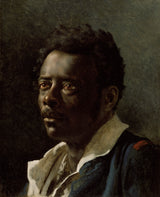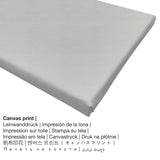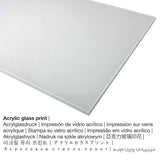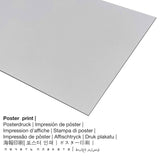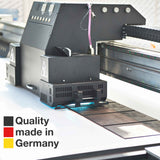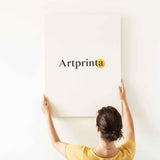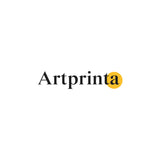Théodore Géricault, 1819 - Ọmụmụ ihe nlereanya - mbipụta nka mara mma
Ụtụ gụnyere. Mbupu gbakọrọ na ndenye ọpụpụ.
The 19th narị afọ kere artpiece site na French onye na-ese ihe Theodore Gericault in 1819. Ụdị izizi ahụ nwere nha: 47 x 38,7 cm e tekwara ya na ọkara mmanụ na kwaaji. Besides, the work of art forms part of the The J. Paul Getty Museum's digital collection. We are delighted to state that the ngalaba ọha a na-enye ọrụ nka site n'ikike nke Ụlọ ihe ngosi nka nke J. Paul Getty.: . N'elu nke ahụ, nhazigharị dị na eserese format na nwere akụkụ ruru nke 1: 1.2, nke pụtara na ogologo bụ 20% mkpụmkpụ karịa obosara. The painter Théodore Géricault was an artist from France, whose art style can be attributed mainly to Romanticism. The painter lived for 33 afọ a mụrụ na 1791 in Rouen and passed away in 1824 in Paris.
Description by The J. Paul Getty Museum (© Nwebiisinka - Ụlọ ihe ngosi nka J. Paul Getty - Ụlọ ihe ngosi nka nke J. Paul Getty)
This portrait was made as a study for Théodore Géricault's most famous painting, The Raft of the Medusa, made in 1819 and now in the Louvre. In a clear case of ineptitude, the ship named Medusa foundered in the sea off the coast of Africa in 1816. A raft with 140 passengers drifted for thirteen days before being rescued; only fifteen people survived. In preparation for his disturbing and controversial painting of the incident, Géricault made many studies from life, like this one, to achieve a sense of realism and specificity.
The sitter wears a shirt similar to those worn by the survivors of the Medusa. Géricault captured the man's character with great sympathy and spontaneity; his watery eyes do not focus on anything outside the canvas but appear to express an internal torment. Shades of brown, gray, and beige blend together to imitate his dark complexion. Dabs of white and beige paint are used to indicate reflective light in his eyes and on the tip of his nose, his bottom lip, and his chin.
Nkọwa ahaziri nke ọrụ nka
| Aha nka: | "Ọmụmụ ihe Nlereanya" |
| Nhazi nka nka: | sere |
| Okwu nche anwụ: | nkà nke oge a |
| Time: | 19th narị afọ |
| Emepụtara n'afọ: | 1819 |
| Afọ nka: | ihe dị ka afọ 200 |
| Usoro izizi: | mmanụ na kwaaji |
| Nha izizi nka: | 47 x 38,7 cm |
| Ụlọ ihe ngosi nka / ebe: | Ụlọ ihe ngosi nka nke J. Paul Getty |
| Ebe ngosi nka: | Los Angeles, California, Njikota Obodo Amerika |
| Weebụsaịtị nke ihe ngosi nka: | Ụlọ ihe ngosi nka nke J. Paul Getty |
| Ikikere nke ihe osise: | ngalaba ọha |
| Site n'aka: | Ụlọ ihe ngosi nka nke J. Paul Getty |
Ozi izugbe na onye na-ese ihe
| Aha onye nka: | Theodore Gericault |
| okike onye nka: | nwoke |
| Obodo onye nka: | French |
| Ọrụ onye na-ese ihe: | onye na-ese ihe |
| Country: | France |
| nhazi ọkwa: | omenkà nke oge a |
| Ụdị nke onye na-ese ihe: | Ihunanya |
| Nwụrụ na afọ nke: | 33 afọ |
| A mụrụ: | 1791 |
| Ebe omuma: | Rouen |
| Afọ nwụrụ: | 1824 |
| Ebe ọnwụ: | Paris |
Họrọ ihe dị iche iche ihe onwunwe gị
Maka ngwaahịa ọ bụla anyị na-enye ihe dị iche iche & nha. Anyị na-ahapụ gị ka ịhọrọ nha na akụrụngwa ọkacha mmasị gị n'etiti nhọrọ nhazi ngwaahịa ndị a:
- Bipụta akwụkwọ mmado n'ihe kwaaji: Our poster print is a printed sheet of canvas with a slightly roughened structure on the surface, which reminds the actual artwork. It is designed for putting your fine art print in a special frame. Please note, that depending on the absolute size of the poster print we add a white margin 2-6cm around the artwork in order to facilitate the framing.
- Mbipụta kanvas: A canvas print is a printed cotton canvas stretched on a wood stretcher. A canvas has the sculptural impression of three-dimensionality. Your canvas print of your favorite artpiece will let you turn your personal art print into a large size collection piece. Canvas Prints have the advantage of being relatively low in weight, meaning that it is easy to hang your Canvas print without any wall-mounts. A canvas print is suited for all types of walls.
- Aluminom ihe eji eme ihe: This is a metal print manufactured on aluminium dibond material with an outstanding depth effect. For your Print On Aluminum Dibond, we print your chosen work of art on the surface of the white-primed aluminum material. Colors are bright and vivid in the highest definition, the details appear crisp.
- Mbipụta enyo acrylic: The print on acrylic glass, often denoted as a plexiglass print, will transform an original into beautiful décor and makes a distinct alternative to dibond or canvas art prints. The artwork is being made with the help of state-of-the-art UV direct printing machines. This creates intense and sharp colors. The great benefit of a plexiglass art print is that contrasts and smaller painting details will be exposed thanks to the fine gradation. The real glass coating protects your chosen fine art print against sunlight and external influences for many years to come.
Banyere edemede a
| Nkewa edemede: | nka nka |
| Mmeputakwa: | dijitalụ mmeputakwa |
| Usoro mmepụta: | UV kpọmkwem obibi |
| Nlụpụta: | arụpụtara na Germany |
| Ụdị ngwaahịa: | na mmepụta ihe |
| A na-atụ aro iji ngwaahịa eme ihe: | nchịkọta nka (mmeputakwa), imewe ụlọ |
| Nhazi nka nka: | usoro eserese |
| Ụdị anya: | ogologo: obosara - 1: 1.2 |
| Oke akụkụ pụtara: | ogologo bụ 20% mkpụmkpụ karịa obosara |
| Ụdị dị iche iche dị: | Mbipụta kwaaji, mbipụta enyo acrylic (nwere ezigbo mkpuchi iko), mbipụta akwụkwọ mmado (akwụkwọ kwaaji), mbipụta ọla (aluminium dibbond) |
| Nhọrọ nke akwa akwa n'elu etiti ihe ndọtị (mbipụta akwa akwa): | 50x60cm - 20x24", 100x120cm - 39x47", 150x180cm - 59x71" |
| Mbipụta iko acrylic (nwere ezigbo mkpuchi iko) dị iche iche: | 50x60cm - 20x24", 100x120cm - 39x47" |
| Nhọrọ nha nke akwụkwọ mmado (akwụkwọ kwaaji): | 50x60cm - 20x24", 100x120cm - 39x47" |
| Nha ebipụta aluminium dibond: | 50x60cm - 20x24", 100x120cm - 39x47" |
| ụba: | agunyeghi |
Ederede iwu dị mkpa: We try all that we can to depict the products as closely as possible and to exhibit them visually in our shop. Nevertheless, the pigments of the printed materials and the printing might differ to a certain extent from the representation on the device's monitor. Depending on your settings of your screen and the quality of the surface, colors can unfortunately not be printed as realistically as the digital version depicted here. Because all the are printed and processed manually, there may as well be slight deviations in the motif's size and exact position.
© Copyright - ikike ọgụgụ isi nke | Artprinta.com (Artprinta)

